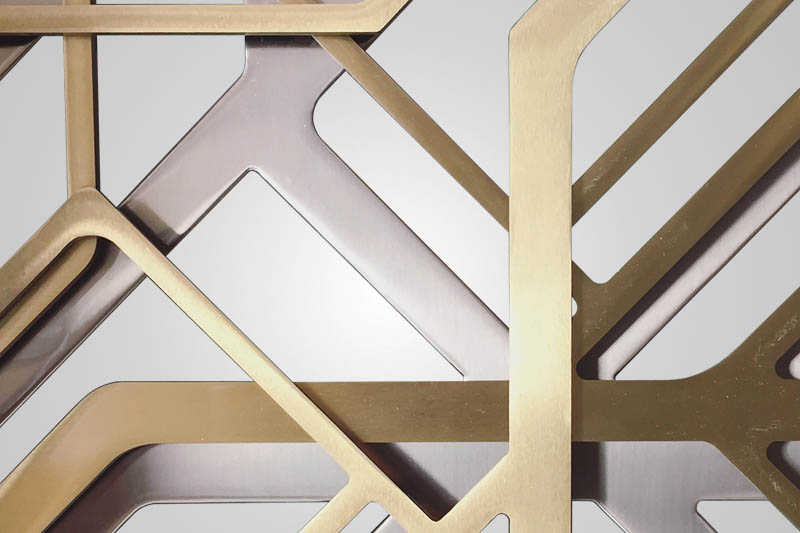Creating durable architectural metal products is a skill that combines artistry with engineering. Whether you’re an industrial manufacturer or a designer, understanding how to ensure the longevity and resilience of metal products is crucial. This article dives deep into the practices and considerations one must embrace to achieve this goal.

Understanding Metals and Their Properties
To begin with, it is essential to comprehend the various properties of metals. Metals such as steel, aluminum, and copper have distinct characteristics that influence their suitability for different applications. For instance, steel is known for its strength, while aluminum offers corrosion resistance. Understanding these properties helps in selecting the right material for specific architectural needs.
Choosing the Right Metal
Choosing the appropriate metal is a critical step in creating durable products. Factors such as environmental conditions, aesthetic requirements, and structural needs play significant roles in this decision. For more information on the common metals used in architectural projects, you can visit this link.
Designing for Durability
Designing metal products with durability in mind involves considering factors such as load-bearing capacity, thermal expansion, and weather resistance. An effective design not only meets aesthetic criteria but also ensures the product can withstand various stresses over time.
Structural Integrity
Ensuring structural integrity is paramount. This involves calculating the stresses and loads the metal product will face and designing it to resist these forces. Utilizing computational tools and simulations can aid in optimizing the design for maximum strength and stability.
Fabrication Techniques
The fabrication process significantly influences the durability of metal products. Techniques such as welding, casting, and forging each have their advantages and challenges. Choosing the correct fabrication method is essential for achieving the desired durability.
Precision Cutting
Precision is key in metal fabrication. Utilizing advanced techniques like laser cutting and CNC machining ensures precise dimensions and clean edges, contributing to the overall durability of the product. For detailed insights into low-volume precision cutting, visit this link.
Surface Treatments
Applying the right surface treatments can significantly enhance the durability of architectural metal products. Techniques such as powder coating, anodizing, and galvanizing protect metals from corrosion and wear.
Protective Coatings
Coatings are essential for corrosion protection. They act as a barrier between the metal and environmental factors such as moisture and chemicals. Choosing the appropriate coating depends on the environmental conditions and the desired aesthetic effect.
Quality Control
Implementing strict quality control measures ensures that each product meets the required standards for durability. Regular inspections and tests during the manufacturing process help in identifying and rectifying any defects early on.
Testing and Inspection
Performing thorough testing and inspection at various stages of production is crucial. This includes checking for structural flaws, surface defects, and ensuring that all specifications are met.
Environmental Considerations
Considering the environmental impact of metal products is increasingly important. Sustainable practices and materials should be prioritized to minimize the ecological footprint of manufacturing processes.
Recycling and Sustainability
Utilizing recycled materials and implementing sustainable practices can enhance the durability of metal products while reducing environmental impact. This approach not only contributes to sustainability but can also improve product quality.
Maintenance and Longevity
Proper maintenance is key to ensuring the longevity of architectural metal products. Regular cleaning and inspections help in identifying potential issues before they lead to significant damage.
Regular Inspections
Conducting regular inspections helps in maintaining the durability of metal products. Identifying signs of wear and tear early on can prevent more extensive damage and prolong the product’s lifespan. For more tips on maintaining architectural metal finishes, visit this link.
Choosing the Right Fabricator
Partnering with a reliable metal fabricator is essential for ensuring the quality and durability of your products. An experienced fabricator will have the necessary expertise and equipment to meet your specific requirements.
Evaluating Experience and Expertise
When selecting a fabricator, assess their experience and expertise in handling projects similar to yours. This ensures they have the necessary skills to deliver durable and high-quality products. Learn more about choosing an architectural metal fabricator here.
Innovative Design Approaches
Embracing innovative design approaches can lead to the creation of more durable and aesthetically pleasing metal products. This includes using new materials, advanced technologies, and creative design techniques.
Modern Architectural Designs
Exploring modern architectural designs can inspire the development of durable metal products. These designs often incorporate unique shapes, materials, and fabrication techniques that enhance both functionality and aesthetics. For inspiration, check out this link.
Advanced Technologies in Metal Fabrication
Adopting advanced technologies in metal fabrication enhances precision and efficiency, leading to more durable products. Technologies such as robotic welding and 3D printing are transforming the industry.
3D Printing
3D printing enables the creation of complex geometries and precise components that were previously impossible with traditional fabrication methods. This technology offers new possibilities for enhancing the durability and design of metal products.

FAQs
What are the most durable metals for architectural purposes?
Steel, aluminum, and copper are among the most durable metals used in architecture due to their strength, corrosion resistance, and versatility.
How can I ensure the longevity of my metal products?
Regular maintenance, proper surface treatments, and choosing the right materials and fabrication techniques are essential for ensuring the longevity of metal products.
What role does design play in the durability of metal products?
Design plays a crucial role in durability by addressing factors such as load-bearing capacity, thermal expansion, and environmental resistance.
For further reading on architectural metal fabrication, visit this external resource.
This article contains affiliate links. We may earn a commission at no extra cost to you.

